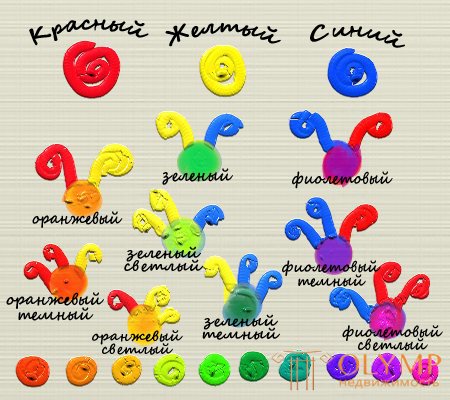
Color is a complex phenomenon. The number of theories, systems, concepts and definitions of the term "color" is simply amazing. Color is constantly subjected to scientific analysis, and volumetric editions are devoted to the theory of color influence, color physics and color science. The first pie chart, now called the “traditional” color wheel, was created by Isaac Newton. But since then interest in color has not waned, and an example of this is close attention to modern corporate culture theorists who actively use the services of professional colorists to predict what colors and color combinations will be used in the market. Tastes are changeable, and therefore it is possible to spend the whole life on search of universal color scale. And surely you, like most people, more than once and not two were wrong in choosing the color. You may have made dozens of mistakes. The number one reason for not being able to choose the optimal color scheme is the misunderstanding of just a few basic principles of color combinations.
The book was created in order to simplify the selection of color combinations and colors, and also to make color an expressive language for you, with which you can tell about yourself, your home, your activities, your project or products. Consider this book as your working tool, a kind of palette with samples of a variety of color shades, as well as an adviser to whom you can turn with any question. Here you will find the most basic principles of color science, set out in an accessible and concise form; Special attention is paid to the color range and combinations of natural tones. The book also includes fourteen "mood-shades", created on the basis of pastel colors. Numerous harmonious and modern color combinations are chosen for them - from touching and attractive to airy, lively and iridescent. All of them were inspired by a wide range of pastel colors.

It is necessary to distinguish color as light and color as pigment.
Artists use three primary pigment colors — red, yellow, and blue — to create all the others — composite and complex colors (this system is discussed in our book). The book itself is printed using printing technology, where any color is obtained by a different ratio of the smallest points of blue (cyan), fuchsia (magenta), yellow (yellow) and black (black), which our eye "mixes" itself. Another system that considers color as light takes the primary colors as red, green, and blue-violet, which, when optically mixed, produce white. An example of the use of such a color system in practice is the image generated on a computer monitor or a TV screen.
Что бы оставить комментарий войдите
Комментарии (0)